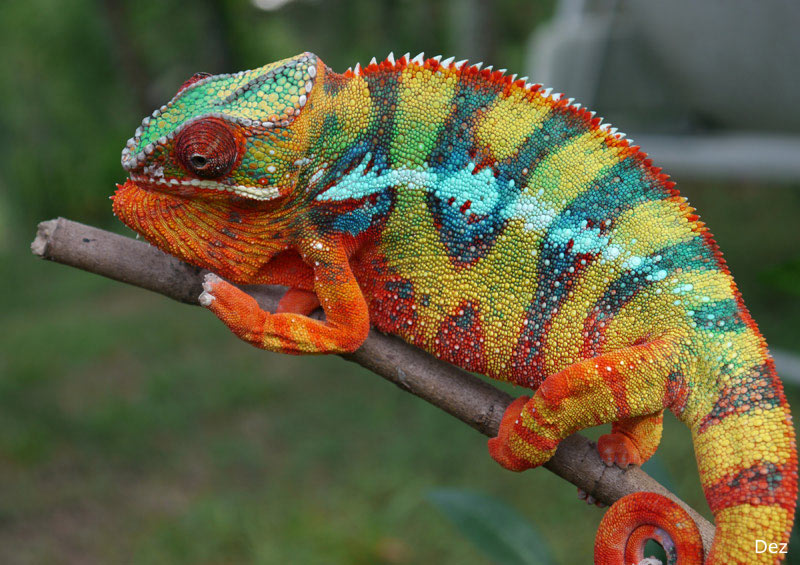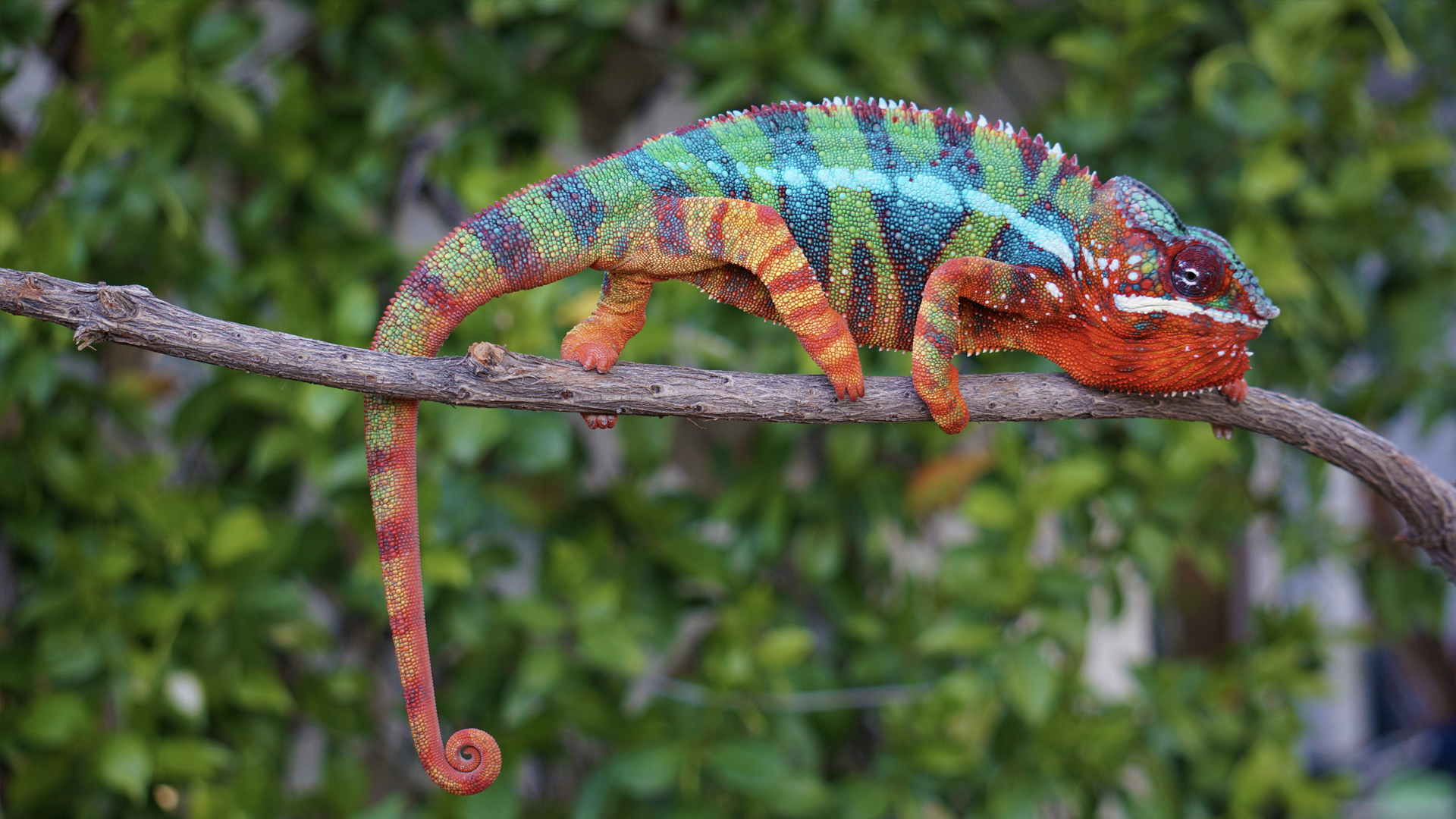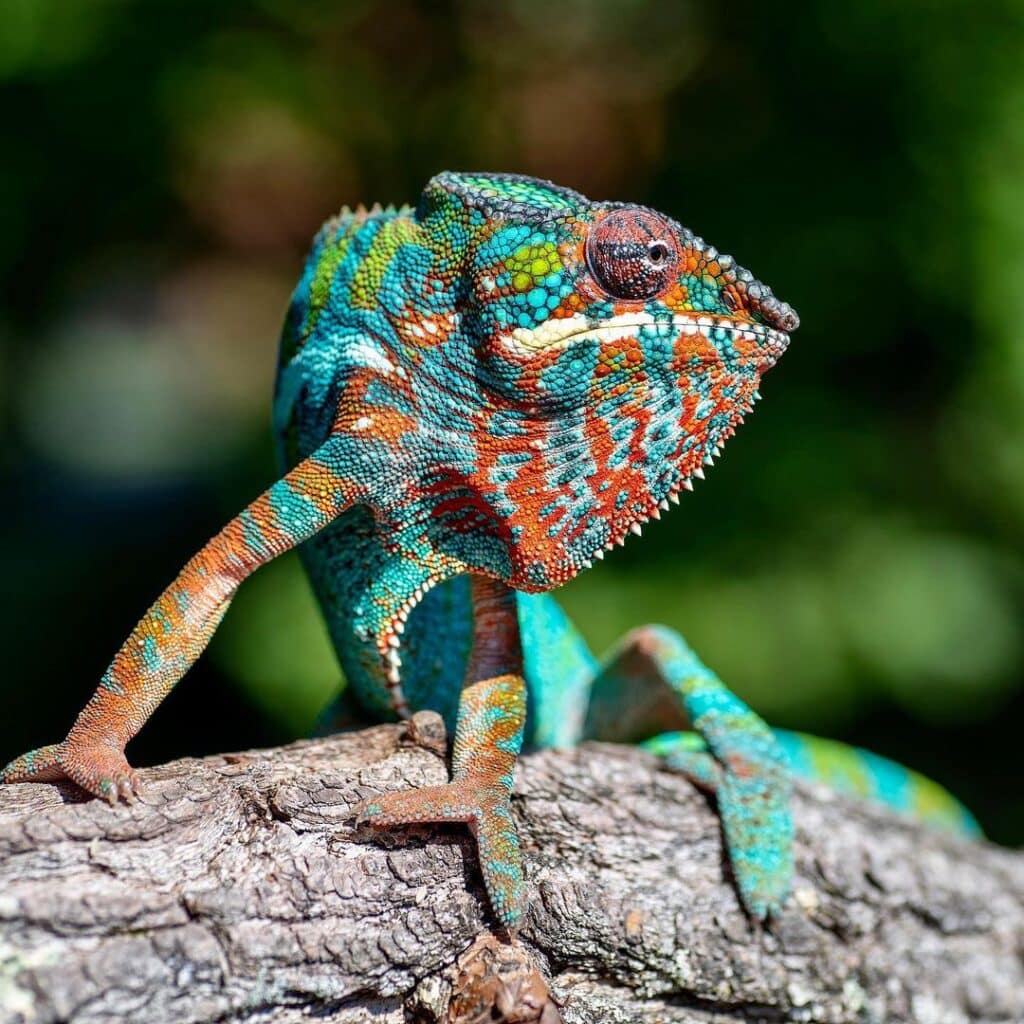Panther Chameleon - A Colorful Companion
Thinking about bringing a panther chameleon into your home? These fascinating creatures, with their truly incredible array of colors, are often sought after for just how much they can change their look. It's almost as if each one carries a little piece of a rainbow on its skin, making them a very popular choice for anyone keen on keeping a unique pet.
There's quite a bit to know when you consider having one of these amazing animals around, from their daily needs to what makes them so special. Many folks find themselves drawn to the sheer visual spectacle these creatures present, and for good reason, too. Their appearance can shift in ways that are pretty captivating, which is that main draw for a lot of people.
Whether you're a seasoned reptile enthusiast or just starting out, getting to know the ins and outs of caring for a panther chameleon can make all the difference. We'll chat about what makes them such a special addition to a home, what kind of care they might need, and some things to think about before you welcome one of these stunning animals into your life.
Table of Contents
- The Panther Chameleon's Amazing Colors
- Caring for Your Panther Chameleon - What Do They Need?
- Is a Panther Chameleon the Right Pet for You?
- Bringing New Life - Hatching Panther Chameleon Eggs
The Panther Chameleon's Amazing Colors
When you look at a panther chameleon, one of the first things that really grabs your attention is their truly incredible range of colors. It's something that makes them stand out, you know, compared to many other creatures. This isn't just a slight shift in shade; we're talking about patterns that can be wildly different from one animal to the next. In a way, this fantastic variety in their appearance is a big part of why so many people find themselves wanting to have one as a pet. It's almost like each panther chameleon has its own unique painting on its skin, making them a very personal and striking companion. You could say, in some respects, that this visual appeal is what puts them at the top of many people's lists when they're thinking about a new reptile friend. The sheer unpredictability of their individual markings and the bright, vivid hues they can display are pretty much what makes them so sought after, honestly. It’s a bit like collecting living art, where every piece is one of a kind. This unique aspect means that no two panther chameleons are ever truly identical in their color scheme, which is quite fascinating to observe. People often look for specific color variations, but even within those, there's a lot of individual flair. This really makes them a joy to watch and interact with, as their appearance can be a constant source of wonder. So, that's a big part of their charm, the way they show off so many different looks.
What Makes a Panther Chameleon So Desirable?
The appeal of a panther chameleon goes beyond just their looks, though their changing colors are certainly a huge draw. For instance, a male panther chameleon that has been raised individually from a young age and bred in captivity can be quite a special find. These particular animals often come with a higher value, with some reaching prices around $1200. That's usually about the highest you'd expect to pay for a sub-adult, meaning one that's not quite fully grown but past its very early stages. This kind of price reflects the care and attention that went into raising it, ensuring it’s a healthy and well-adjusted animal. It also speaks to the specific lineage and the striking colors these particular males can exhibit. People who are really into panther chameleons often seek out these individually raised males because they tend to be very robust and display some of the most vibrant color patterns available. So, in a way, the desirability ties into both their natural beauty and the dedicated effort put into their early life. It’s a bit like choosing a piece of art that you know has been carefully crafted. This makes them a bit of a premium choice for enthusiasts, and understandably so, given the unique qualities they bring.
Caring for Your Panther Chameleon - What Do They Need?
Taking care of a panther chameleon means providing them with the right kind of environment, which is that important for their well-being. For example, one person mentioned having a female panther chameleon for eight months, which is a good chunk of time to get to know their habits. This individual also shared that they have two other panther chameleons, and they all share a four-foot fluorescent light that provides full spectrum light. This is pretty key for these animals, as they need specific lighting to stay healthy, helping them process nutrients and keep their bones strong. While they might share a light source, it's generally understood that each chameleon needs its own separate living space. You know, they are solitary creatures and do better when they have their own little world to explore. So, even if the light fixture spans across multiple enclosures, each panther chameleon should have its own home where it feels safe and secure. This setup ensures they get the necessary light without the stress of sharing a confined space with another chameleon, which can lead to problems. Basically, giving them their own spot is a very good idea for their peace of mind and overall health.
How Much Space Does a Panther Chameleon Require?
When you're thinking about getting a panther chameleon, the cage setup is a big consideration, and it's something that can make people feel a little unsure. One person, for instance, had their eye on a really beautiful panther chameleon they wanted to buy but was feeling quite indecisive about how to arrange the cage. This is a common feeling, as setting up the right home for these creatures involves more than just picking a box. You need to think about things like climbing branches, plenty of foliage for hiding, and how to maintain the right temperature and humidity. It's not just about size, but also about creating a habitat that feels natural and provides all the things a panther chameleon needs to thrive. So, while you might be excited about bringing home a new pet, taking the time to plan out their living space is absolutely essential. A well-designed enclosure means a happier, healthier chameleon, and that's what you want, right? It's pretty much the foundation for good care, ensuring they have room to move and places to feel safe. This thought process, of really getting the home just right, is a crucial step for any potential panther chameleon owner.
Is a Panther Chameleon the Right Pet for You?
Considering a panther chameleon as a pet means being ready for their specific needs, and sometimes, even with the best care, things can come up. For example, one person has a male panther chameleon that is three years old, and this animal has been dealing with weakness in its grip for some time. This is a pretty significant issue for a chameleon, as they rely heavily on their strong grip to move around their enclosure and hold onto branches. The owner took the chameleon to the vet, who performed blood work. The results of those tests would, of course, tell a lot about what might be going on inside the chameleon's body, giving clues about its overall health. It shows that owning a panther chameleon isn't always straightforward; there can be health challenges that require professional help. So, being prepared for potential vet visits and understanding that these animals can have specific health concerns is a part of being a responsible owner. It’s important to remember that even with careful attention, sometimes a panther chameleon might face health difficulties that need a vet's trained eye. Basically, having a plan for veterinary care is a good idea when you welcome one of these creatures into your home.
What Should You Know About Panther Chameleon Health?
When it comes to the health of a panther chameleon, there are aspects that can sometimes cause concern, especially regarding their unique characteristics. For instance, the history of their incredible color variations is something that some people feel strongly about. One person expressed that it just doesn't feel right to them, implying a concern about how these color lines are maintained or documented over time. This suggests that for some breeders and owners, preserving the purity and natural progression of these amazing colors is a very important thing. Other breeders, however, might have completely different views on this, and that's okay, you know. There can be different approaches to how these animals are bred and how their lineage is tracked. The point is, the vibrant and varied colors are a hallmark of the panther chameleon, and discussions around their history and how they are passed down are a part of the community. So, understanding that there are different perspectives on the genetic history of these animals' colors is part of learning about them. It's a bit like tracing the family tree of a very colorful living artwork, where different people have different ideas about what makes it truly special.
Bringing New Life - Hatching Panther Chameleon Eggs
For those looking to expand their experience with panther chameleons, hatching eggs can be a truly exciting prospect. Someone who was soon to be a first-time chameleon owner was looking for advice on egg hatching, which is a big step. This person had purchased a chameleon egg from an online breeder a few months back, and it came with an estimated hatching time. This shows that bringing new panther chameleon life into the world often starts with careful planning and a bit of patience. Knowing the estimated time gives you an idea of when to expect little ones and how long you’ll need to keep the egg in just the right conditions. It's a process that requires some specific environmental controls, like temperature and humidity, to give the tiny chameleon inside the best chance to develop. So, getting advice from others who have done it before is a very smart move for a newcomer. Basically, it’s a waiting game, but a very rewarding one when it works out, seeing a brand new panther chameleon emerge from its shell. This part of the hobby can be incredibly fulfilling, watching the miracle of life unfold right in front of you.
Breeding Panther Chameleons - What Temperatures Work?
When it comes to breeding panther chameleons, temperature plays a very significant role in the success of hatching eggs. Someone who has been breeding panther chameleons for four years shared their experience, stating they've consistently kept temperatures at about 75 to 77 degrees Fahrenheit. This range seems to work well for them, as they mentioned hatching about six batches of Ambilobe babies. These babies were ready at around seven months, which suggests that these specific temperatures are quite effective for incubation. It shows that consistent and appropriate temperature control is pretty much key for successful reproduction in panther chameleons. Breeders often fine-tune their methods over time, and finding a temperature range that yields good results, like these 75/77-degree settings, is a valuable piece of information. So, for anyone considering breeding panther chameleons, learning from the practical experience of others, especially regarding environmental conditions like temperature, can make a big difference in their outcomes. It’s a bit like finding the sweet spot for a recipe, where getting the temperature just right leads to a successful batch of new life.
The panther chameleon, with its stunning array of colors and unique needs, truly offers a rewarding experience for those ready to commit to its care. From understanding their vibrant patterns and the value of individually raised males to setting up the perfect home and even exploring the exciting process of hatching eggs, there's much to learn and appreciate. Paying attention to details like lighting, enclosure size, and temperature for breeding can help ensure these captivating creatures live a full and healthy life. Their distinct appearance and specific care requirements make them a truly special companion, offering a constant source of wonder for their human friends.

Panther Chameleon Facts, Habitat, Diet, Life Cycle, Baby, Pictures

Panther Chameleon Baby

Panther Chameleon - Learn About Nature